I have always been passionate about natural phenomenon, such as earthquakes and volcanoes. They remind us how small, insignificant and vulnerable human beings are. They remind us that we are not the centre of this universe, as much we would like to be.
Now I am particularly attracted to volcanoes. They are temperamental, moody. They have strong character, they evolve overtime. Similar to people, in a way.
Italy is the most volcanic country in Europe. It is sitting on the top of where the Eurasian and African plate crash, remember plate tectonic theory from school. These two plates butting against each other cause earth movements provoking the birth of volcanos. Some of these volcanos are already extinct, some are dormant, but some are still active.
Today, we are climbing Vesubio (Vesuvius), the first of our four volcanoes in Italy.
Vesubio volcano is still active. He last erupted in the 1940’s.
He is considered the most dangerous volcano in Europe. On the one hand, because of the way he explodes. He doesn’t mess around with little expels of lava, there and then. He waits and waits, latent, until he cannot take any more and he bursts, causing massive catastrophe with unlimited destruction.
On the other hand, because his surroundings are densily populated. Now you cannot blame him for this. People decide where to live. It seems that Pompeii and Hercolaneum didn’t learn and new towns were rebuilt on the top of the buried ones. Now, their people carry on with their lives ignoring that the tragedy that befell Pompeii could happen again. At the end of the day, this beast is their main source of income and they are making the most of it whilst it lasts.
Over the last couple of days, we have been keeping an eye on Vesubio. He tends to look pretty clear in the morning but as the day progresses he becomes shy preferring to hide amongst the clouds which tend to gather around his summit, covering his crater.
So we have set up early this morning before the clouds sets on him. However, the driving up has been really painful. The road from Pompeii is very windy and in a pretty bad state.
After 45 minutes we reach the edge of the national park. From here, we cannot go any further without a guide and to hire one will cost us €20 each. We go back to take the road from Torre del Greco. The drive from here is a bit longer but we will get closer to the summit.
So much for setting off early. It is now 12.00 and clouds have already built up around the crater. This means no views from the top. We are very annoyed with ourselves for not having planned this better.
Even more annoying is the amount of people around.
A guy seems very keen to help us find a parking space for Dora. We suspect he is only after money, we drive back and park Dora in a layby below further down.
We make our way to the entrance of the park, after paying €10 for it. For what we know, the climb should take 45 minutes there and back.
The clouds moves quickly. We may be lucky to enjoy the views from top after all.
The path is like a motorway. It is very well paved and marked and full of people.
In the meantime, we take photos as soon as there is a break in the sky.
The volcanic landscape starts to reveal itself by presenting massive rivers of dry lava. Dramatic, impressive, scary.
The crowd slows us down. The walk is not pleasant. It doesn’t feel we are in contact with nature, rather it feels we are walking along the high street of any given town.
But wonderful landscapes reminds us why we are here for. Lava has been cut off to create a path and it is showing the different mineral rocks that the volcano expelled.
And there it is. We have reached the summit in only 15 minutes.
Here is the first sign of this active volcano. Even though the last eruption was 80 years ago, fumes and smoke still come out of the holes. Is he ready to explode again?
Here it is a shot of the multi-coloured crater. The yellow stone is sulphur, the black is silica, the red, a combination of both.
This is the vivid expression of intimidation,, strength, and power. I have realised one of my dreams, I have seen an active volcano, I can now die in peace.
We continue to walk along the edge of the crater, we hope we can go all the way around. More fumes also rise on this side.
The cloud is coming back again. It gets mixed up with the smoke created by Vesubio. It is difficult to distinguish which is which.
The sulphur is such a distinct smell. It doesn’t resemble anything I have smelled before. I guess I can describe it as a combination of bonfire and putrefaction.
How bright the colours of these rocks are when they come out of the crater at thousand of degrees centigrade? If only it wasn’t that dangerous to be so close when that happens…
By continuing to expel smoke, Vesubio reminds us he is still with us, awake, ready for action.
We make out a group of people walking along at the other side of the crater. How did they get there?
We reach a gate. From here we can’t go any further. A guy is sitting next to it. We can only go around the crater if we hire a guide, and this will cost us €80. Really? We are puzzled and sceptical. The information from our guide and from the national park website do not mention any of this.
All of this looks very dodgy. This guy seems to be working for a private touring company. Funny enough, the touring company that will take you around the crater for €80. What we find really strange is that we have not seen any signs of any member of staff who work for the national park. So here is my hypothesis: it feels almost like the local government has carelessly left the park to the private companies to run on its behalf, for a fee. And in the name of safety, these private companies can charge the public astronomical amounts if they want to see a bit more of the park. Who wants to prove me wrong?
So, as you may have well guessed, we didn’t pay €80. We just turned back, sulking as we couldn’t get any further.
The walk back took another fifteen minutes. It is now 14.30, well passed lunchtime. We go back to Torre del Greco and get some food from the supermarket. Although we are starving we decide not to have lunch here. We want to get out of this area. Four days around here is long enough for us. We will drive for an hour and stop somewhere different.
The plan is to visit Paestum tomorrow. Yes, more ruins. This afternoon, on the way to this place, we will stop at Maiori, a small village on the Amalfi coast where the Brazilian architect Oscar Niemeyer built an auditorium. Needless to say that this suggestion comes from Gary. This is the second time we have come across one of this architect’s designs. The first time in Aviles, Spain. We were driving along the coast of Asturias when, by chance, we found this cultural centre designed by him.
The drive along the Amalfi coast looks promising. This coast has been declared a Unesco-protected area, and sadly since then, it has become one of the top Italy’s tourist destinations. How well is the area now protected under such an invasion of tourists? Luckily for us, 70% of these tourists come from July to September. So maybe the place is just for us.
We look to the right to admire the dramatic mountains at the edge of the national park of Monti Picentini.
We look left for a complete change of scenery. It is like travelling between two different places in a few seconds.
The Amalfi coast is a postcard-perfect vision of shimmering blue waters,
fringed by vertiginous cliffs,
on which whitewashed villages and terraced lemon groves cling.
I see what they mean by an invasion of tourists. This place must be packed in summer, but pretty abandoned now.
Here is the perfect place to have lunch, overlooking at the silver sea.
We continue and arrive at Maiori at 17.30. This is another hilltop town. And like all hilltop towns, it has those roads that Dora hates.
We feel brave today and continue to drive to the historic centre without hesitation. An angry policewoman stops us. “Have you not seen the sign? You cannot be here, turn back, turn back” No we hadn’t seen the sign but she is too mad to listen to us. We drive back down to the start of the village and leave her by the road next to a few cars.
We finally reach the auditorium. It is not open. Shame.
It is rather a strange that the architect has decided to build a building like this in such a remote village. Is it economically viable? Ii it appreciated by the public? Does it get amortised over the years? Perhaps we need the input of an architect. Gary, over to you.
Typical Niemeyer, simple geometry, whitewashed walls, grand public spaces. Maybe this building works in summer with an influx of the middle classes wanted to hear violin concertos on a summers evening. Not sure how the form work with the function of the building. Or is this led by some metaphor, a wave crashing against the cliffs perhaps, that has no reference at all to what the building is used for. The approaches to the building are less than flattering as you overlook the roof, it appears cumbersome and not that well constructed. Not that impressed really. Shame, I normally like Niemeyer. GDR
Ah the dramatic overhang, but most approach this from above so have to walk around the building to get this view, maybe Niemeyer arrogantly thinks everyone will take the time to do this. I suspect not.
The pure white works well in this landscape though, and the geometry is elegant, shame it is not open so we can see the interior. GDR
It is getting late. We get back to Dora and drive to our free aire of today, in Cava de Tirreni, a few kilometres inland from the Amalfi coast.
Good night Dora.
SM

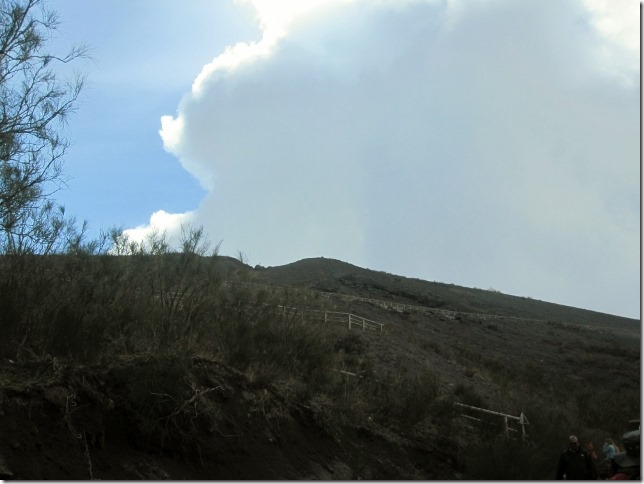
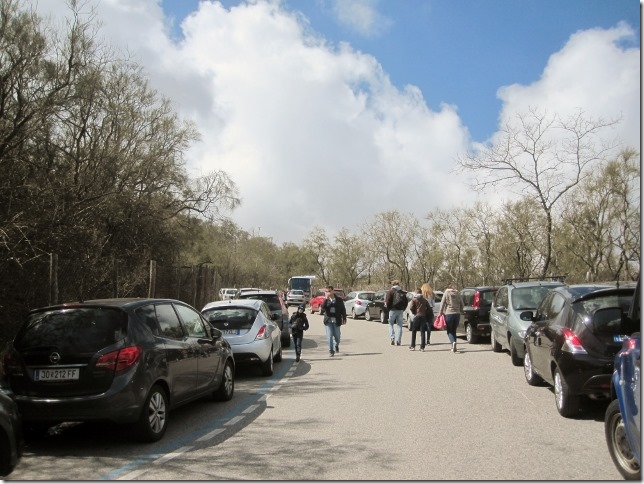
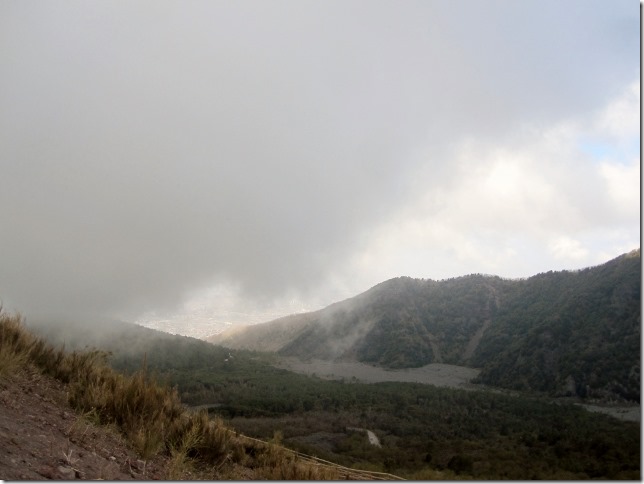
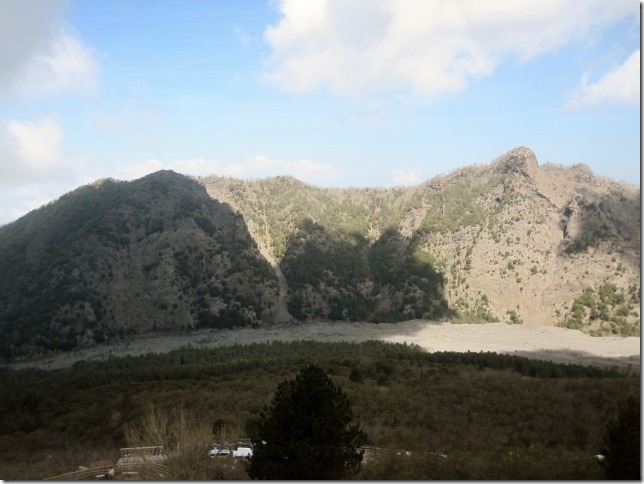
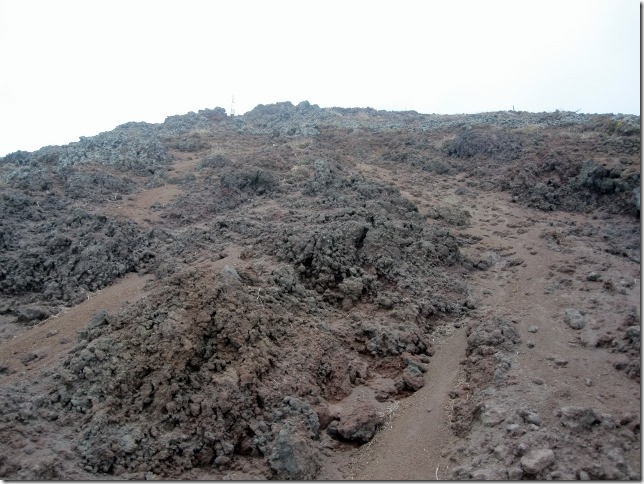
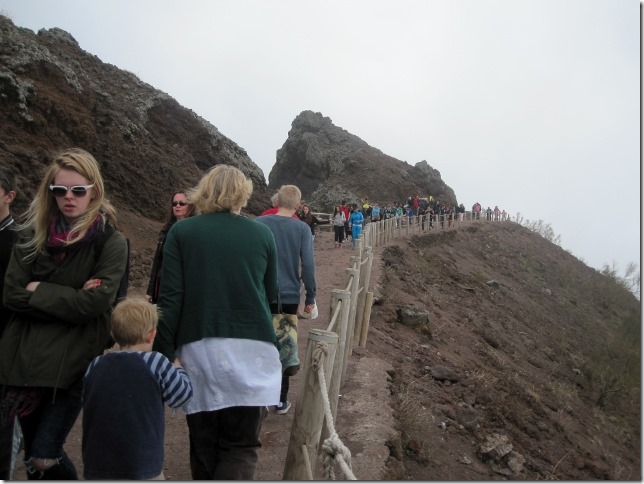
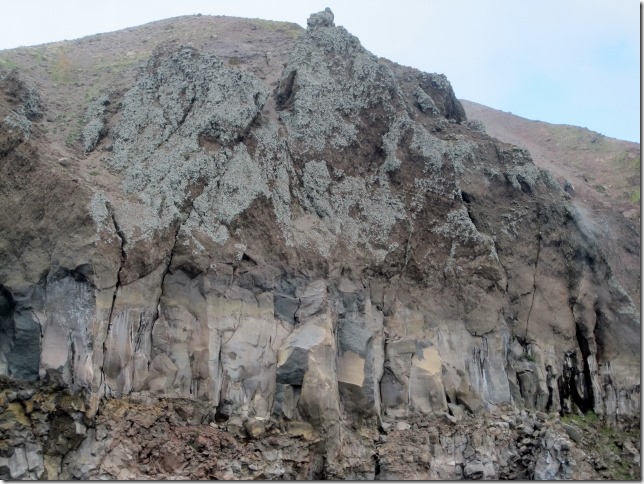
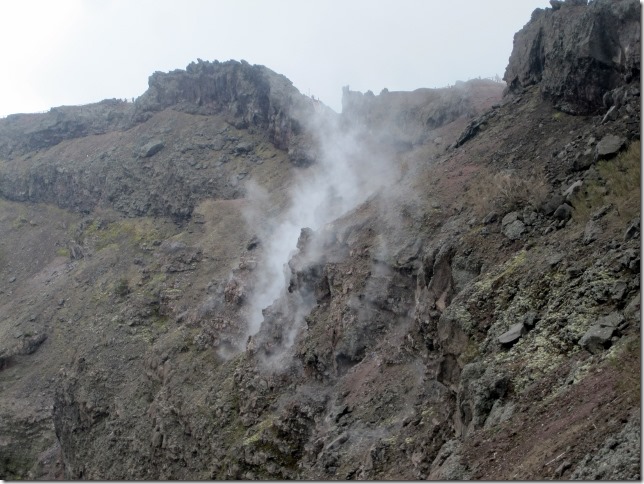
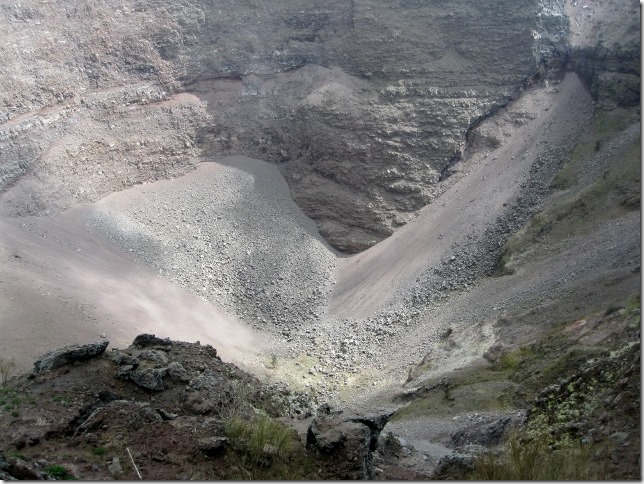
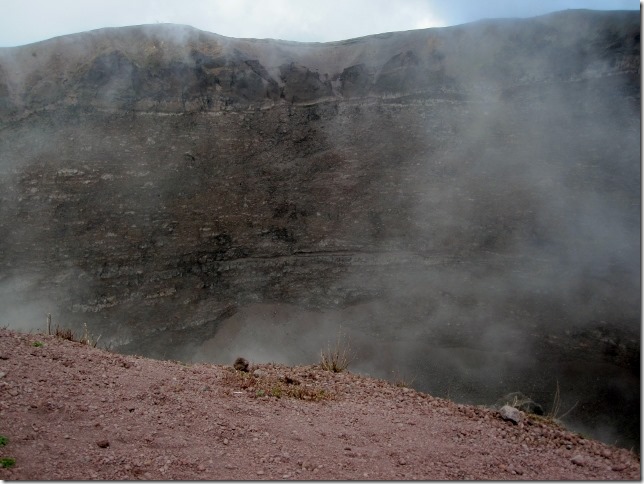
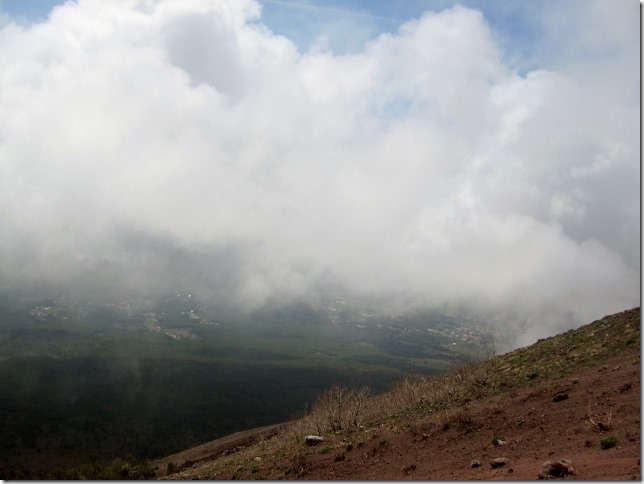
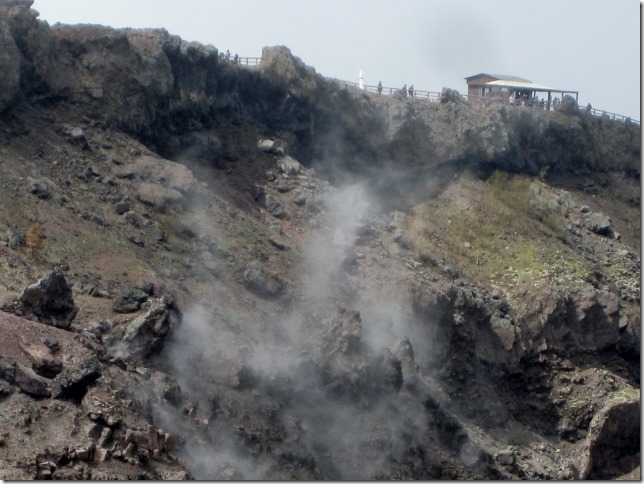
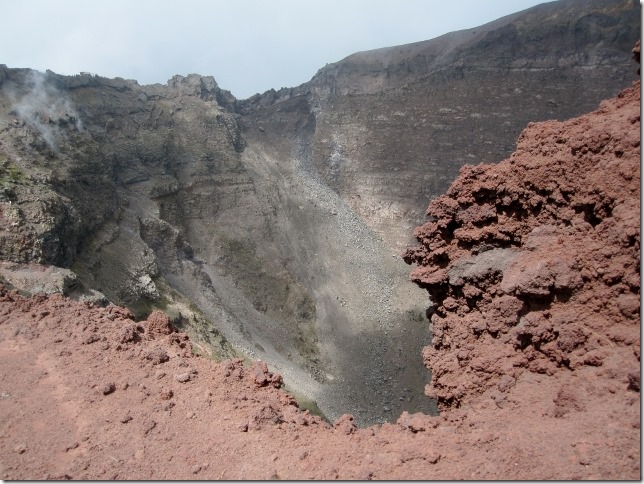
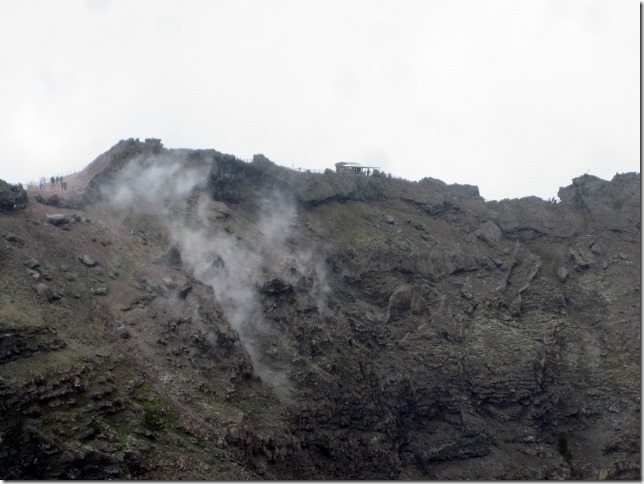
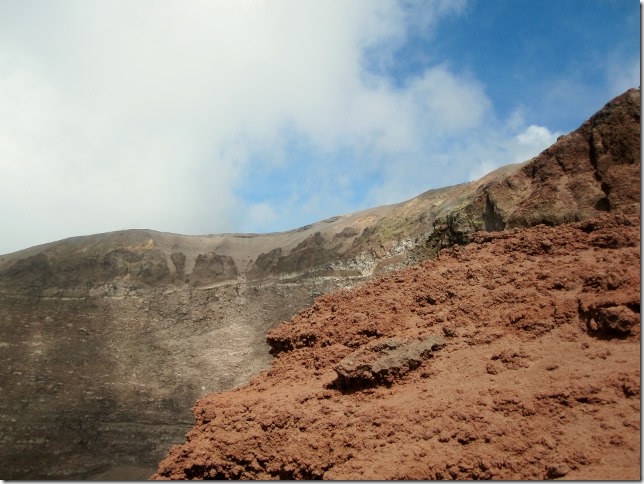
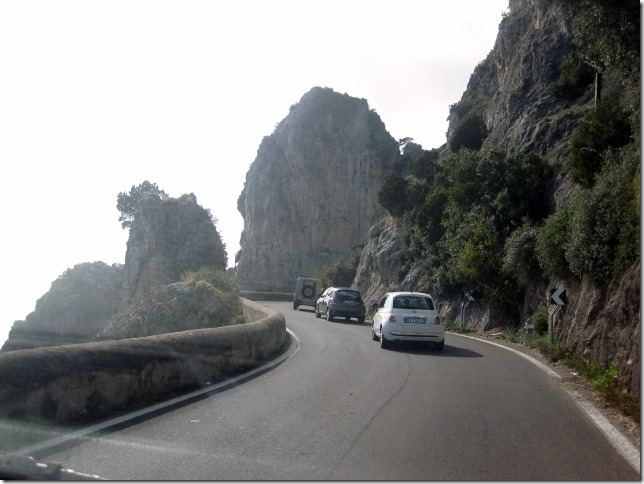
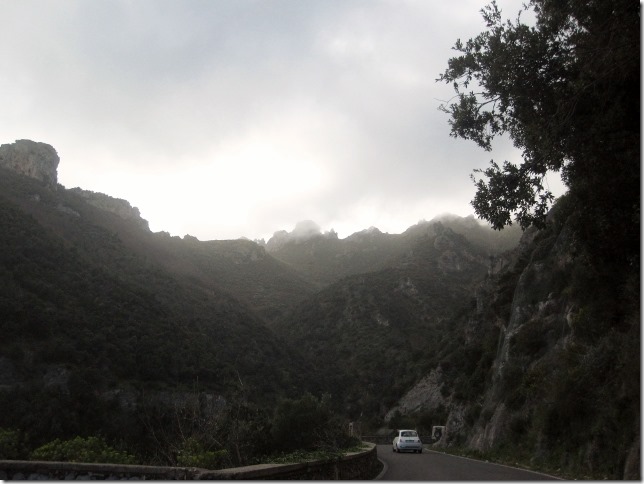
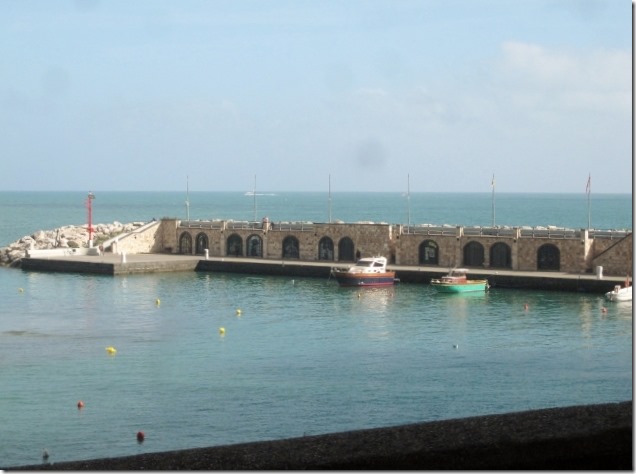
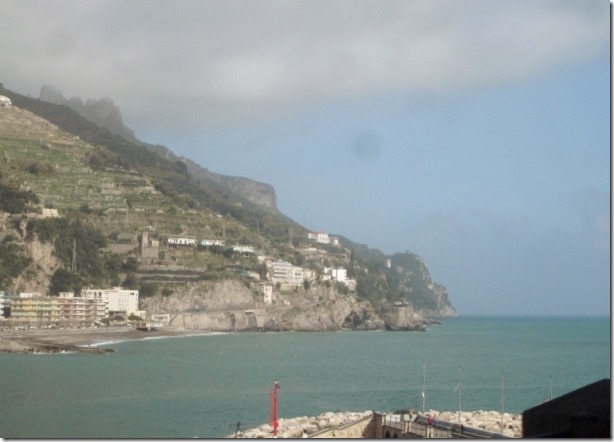
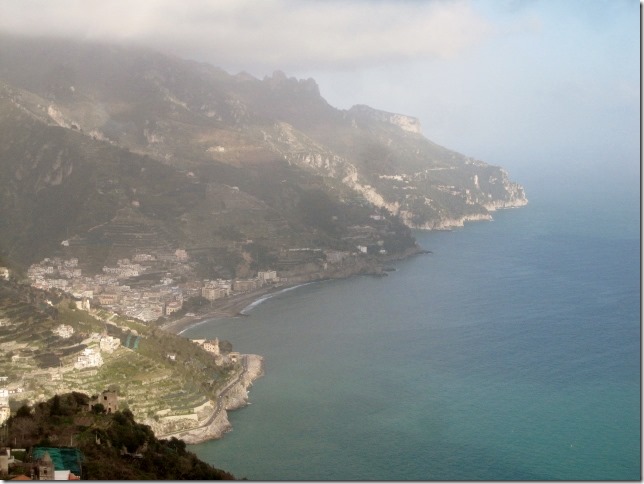
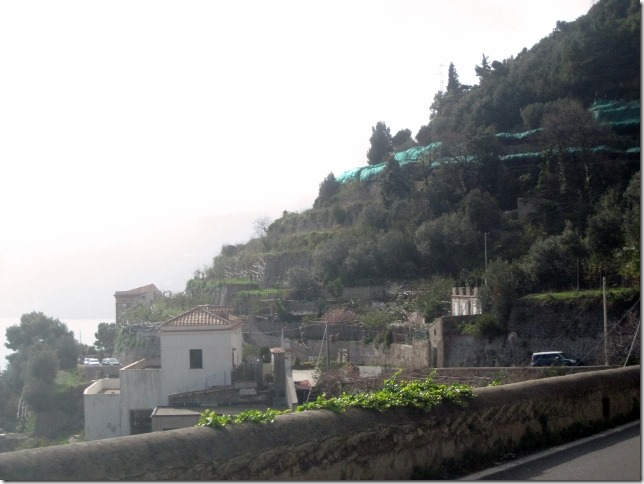
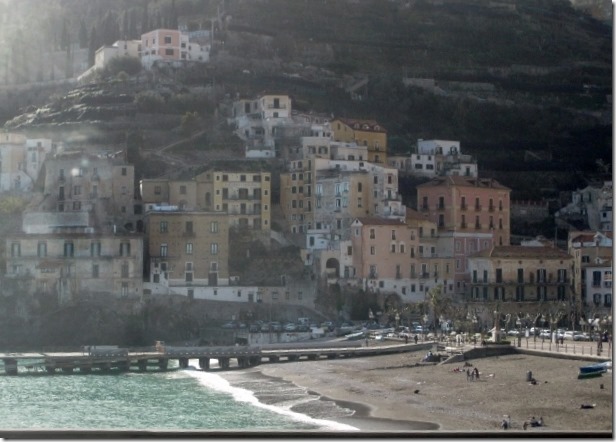
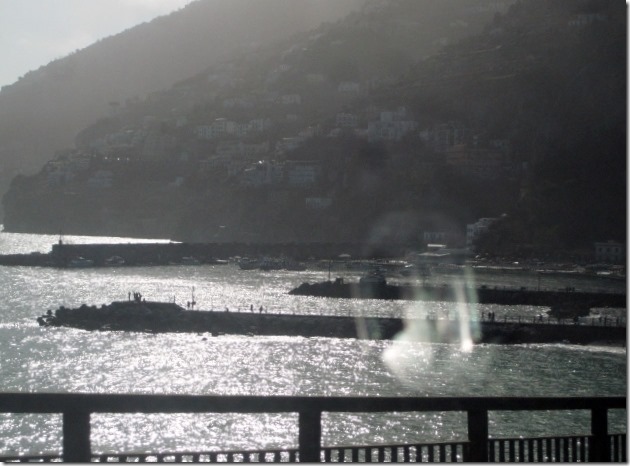
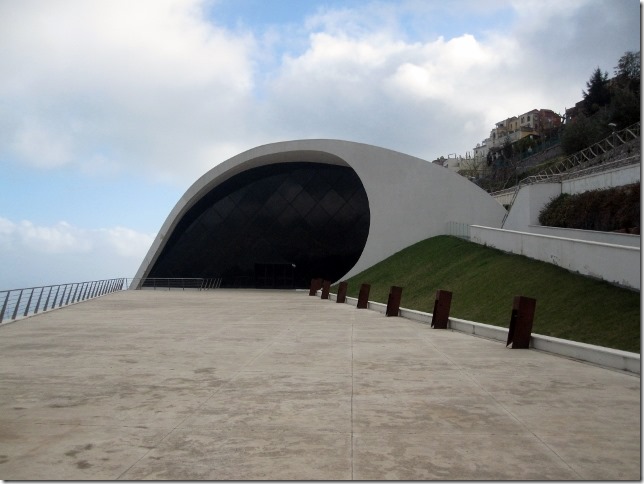
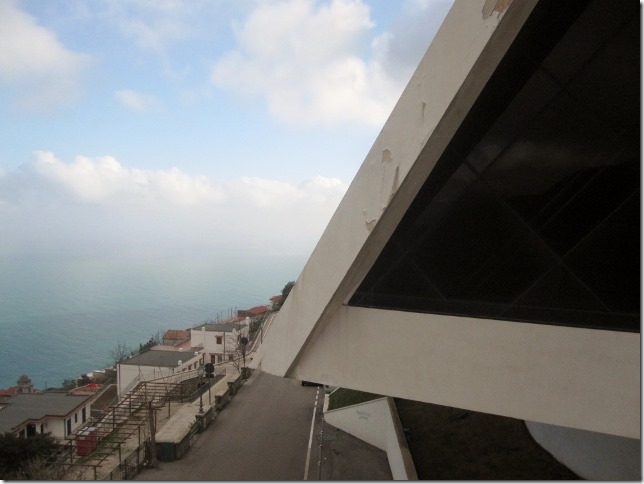
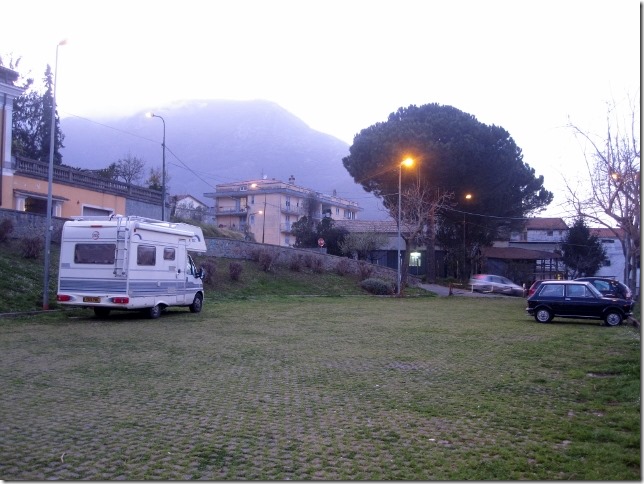






Impresionantes las imagines del Vesubio , como pueden edificar de nuevo, cuando puede ocurrir otro desastre cualquier día , cuando ocurren las cosas nos lamentamos, pero seguimos sin poner remedio. (Los humanos como siempre).
Que barbaridad!!!!!!! como se puede pedir 80 euros un, robo a mano armada, luego se quejaran que no hay turismo.
Maravillosos acantilados.
Pues si te ha gustado este volcán, espera a los que vienen!